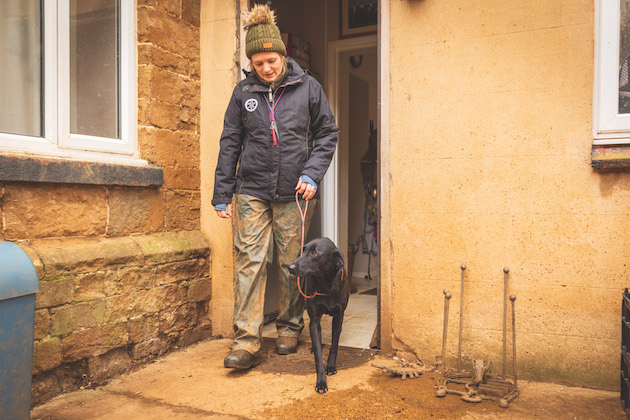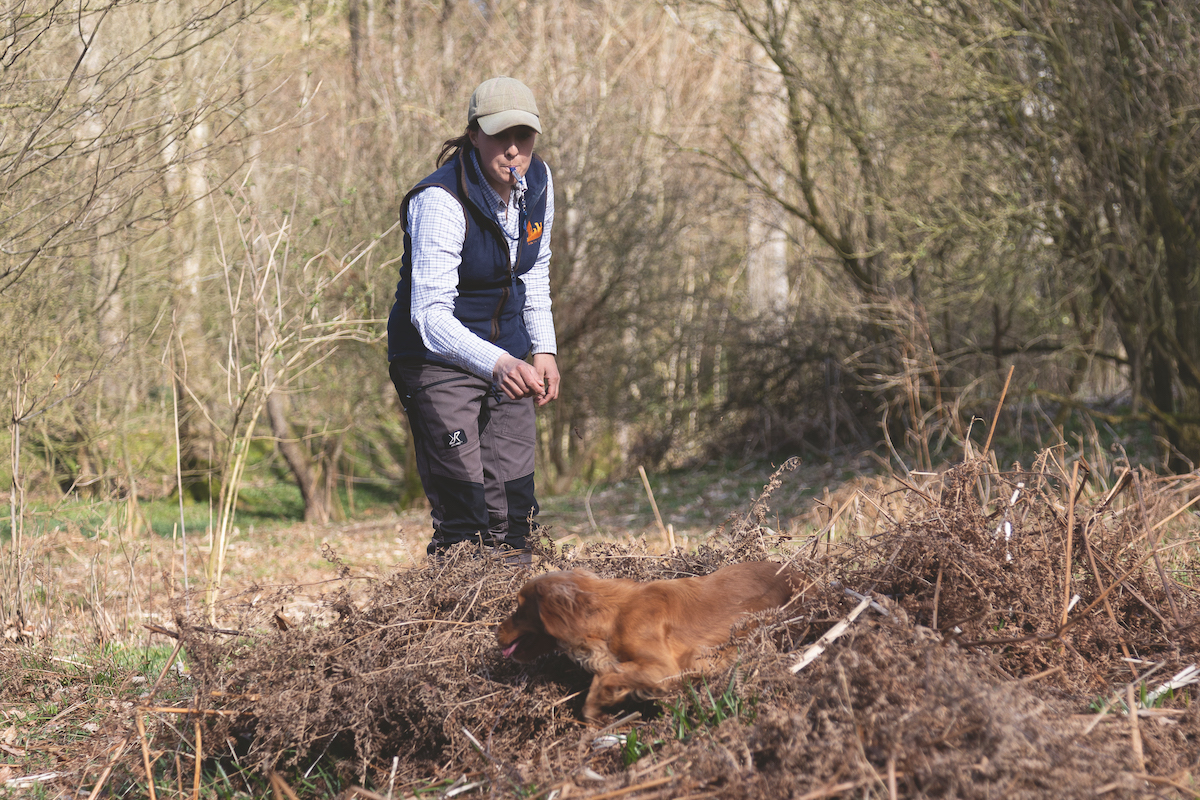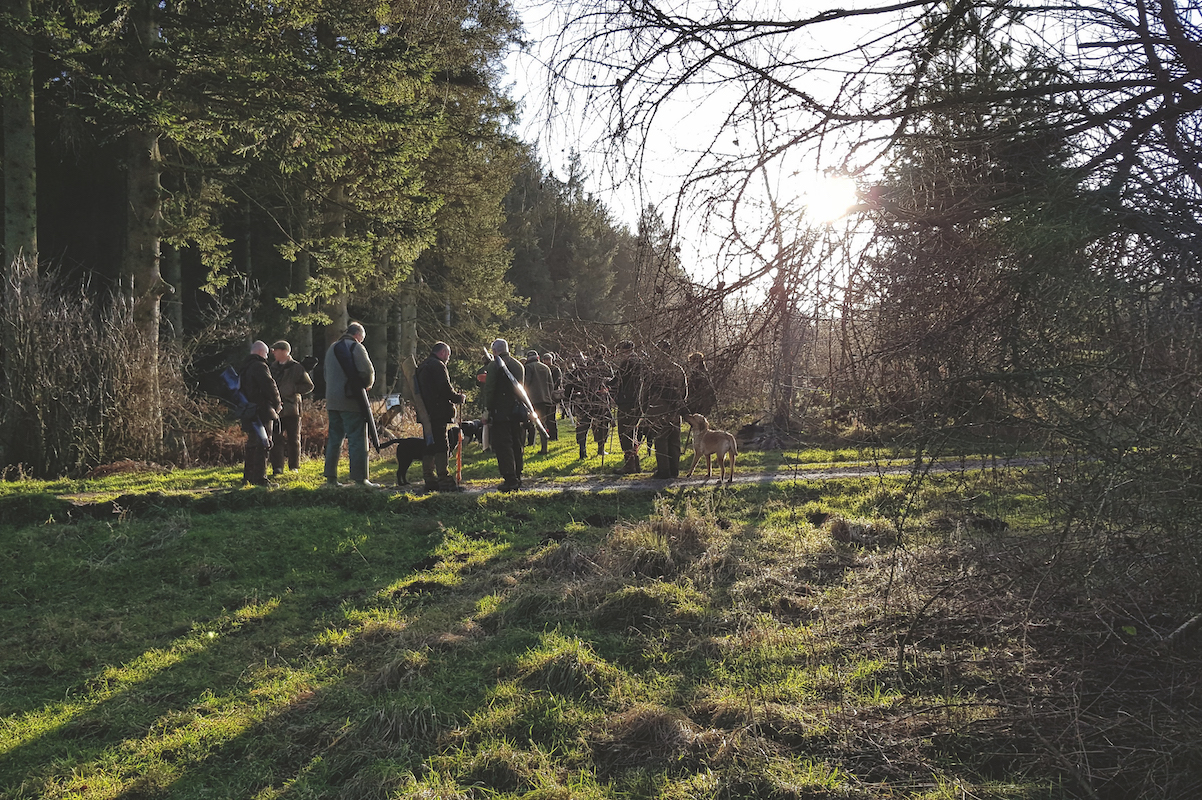Day-to-day gundog training
Lizzie may be having time off, but that doesn’t mean she isn’t learning, says Ellena Swift, who is also focusing on getting Keepa trial-ready

Most basic training is built into daily life, such as being required to heel when leaving the house
Day-to-day gundog training
Lizzie, the young flatcoat, has gone home for a little break. She is now one year old and coming on a treat, but she needs time to just grow up. It is easy to push a young dog too hard too fast so they become overwhelmed and either shut down or rebel.

When you have mastered off-lead control, a bit more distance on a long line can be introduced
With this in mind, I’ve given her owner instructions to keep her day- to-day gundog training simple and achievable. Most of her basic training is built into daily life. When leaving the house, she’s required to heel for the first few minutes before being allowed to free run. This is to prevent her getting overexcited and barging through the door.
When walking, she’s required not to go too far and to recall immediately when asked. This means a long line is used to ensure success every time.

Using the quad bike, Ellena takes the dogs out for a trot, maintaining a steady, consistent pace
She spends a lot of her day on the Gator with her owner. This is a great lesson in impulse control as she has to stay on the 4×4 while birds run and fly around her. Her day-to-day life includes many distractions, such as pheasants, partridges, rabbits and so on, so when there is a lot going on, there is a higher chance she might get distracted and forget herself. In this instance, by using a long line, we can ensure she succeeds.
General training
Dogs are very similar to children in the sense that it is important they succeed often. For example, my little boy is five years old. At school he is doing maths at the level of a five-year-old. If you continually put him in a class designed for 12-year-olds, he would undoubtedly and repeatedly fail. Like a dog, he would either withdraw and give up completely or rebel and start messing around. So whether it is specific training drills or day-to-day life, it is important that everything is age and stage appropriate for the dog in question.
If you are walking through an area densely populated by game, ask yourself: has my dog been trained around game? Have they covered heel and recall over and over so they are now consistent and solid? If the answer is anything other than 100% yes, then consider how to approach this. A lead or long line will be imperative to ensure nothing goes wrong.
Once you have the control on a lead and hardly have to touch it — in other words, loose lead walking is consistent around scent and game — it is time to try off lead. Once that control has been learned, a bit more distance on a long line can be introduced. Recall is to be practised. Handlers are often far too keen to move on before these vital areas are covered. You only need to scan a gundog group on Facebook and it will not be long before the classic question is asked: “My dog was doing so well with recall but they are now going through a ‘teenage’ stage and ignoring recall if they see a bird.” The underlying issue here is that the dog has not been taught impulse control nor recall around that level of distraction.
As much as we may like to think dogs are human, they are not. They do not ‘rebel’ as perhaps a human teenager might. They do, however, grow in confidence and gain a willingness to explore. This is not the dog being naughty. It is the classic trap of the handler believing that their dog stayed near because they were trained, when it was simply a puppy using their handler for security. Then as soon as they became more confident in day-to-day gundog training, they wanted to explore more and needed the handler less.
A gradual return to normality
For Keepa, there is now light at the end of the tunnel for competitive gundog work. As I start planning a gradual return to normality, I need to ensure Keepa is not only prepared with regards to training but also in fitness when day-to-day gundog training.
A dog must be able to manage the physical side of its work. Normally Keepa would have been a lot fitter during the winter months and, though he did work this season, he did a quarter of what he would have done in a regular year.
I am aiming for Keepa to be competition-ready around May. This gives me plenty of time to fine-tune his fitness and strength. First, I am going to be doing lots of hill work with him. It is important when getting a dog fit that you do not simply ‘hammer’ them. Road running and constant vigorous exercise can bring on many injuries and strains. So I am using the quad bike once a week and taking the dogs out for a simple trot up and down our banks. I make sure to stay at a steady, consistent pace, so they simply trot. This is more about stamina and distance than explosive speed.

When Keepa has swum across to Ellena, she lines him up and sends him back for a retrieve
Water games
The weather is notably warmer now, which means we can begin swimming in day-to-day gundog training sessions. This is the best form of low-impact exercise. The dogs’ joints and muscles take little strain while exercising and they get a full-body workout. Though I am going to be swimming Keepa for fitness, I will also use simple memory retrieves to ensure he is swimming good distances. I sit him one side of the water and leave several dummies approximately 15 yards behind him. I walk around to the other side of the water and recall him across. When he has swum across to me, I line him up and send him back to retrieve one. Once he has picked one, I will change the location I am sending him from and re-send. This way, I can change the retrieve without having to set it up over and over and get him swimming good distances from different angles.

Once Keepa has picked one of the retrieves, Ellena changes the location she is sending him from and sends him again. This gets him swimming good distances from different angles
A jump ahead
The next part of Keepa’s fitness in day-to-day gundog training is jumping. Many people do not allow their dogs to jump, preferring them to find a way around or go under. This is fine until the dog is hunting out of sight. For most working dogs, if they are following a wounded bird or scent and reach a fence, very little will stop their determination to continue following. Those that have not been taught to jump are much more likely to make a mistake in the heat of the moment and be injured as a result. All of mine are trained to jump so that if ever they need that skill, they have it.

Ellena uses agility jumps so Keepa learns to overcome obstacles cleanly
I use agility jumps as, if Keepa touches the poles, they will fall, which dogs do not like, so he learns to jump cleanly. In dog agility, a great deal of thought goes into strengthening and conditioning dogs and grid work can help with this.
Finally, I am going to do something I try to ensure I do at the beginning and end of the shooting season: get a canine massage therapist to treat him. Dogs tend to be extremely stoic and enduring when it comes to pain and injuries.
As an example, Keepa sliced his paw extremely badly this season and I had no idea. He was not lame, did not yelp or make a fuss. I only noticed when I spotted some blood on his bed. A qualified and experienced therapist can detect tightness in muscles, areas of weakness, stiffness and even where the dog might be sore. Once identified, these can then be treated. Fortunately, I have a fantastic lady who — once Covid restrictions allow — will come and treat all my working dogs at home.
The work our dogs do pushes their bodies, often to the extreme. They are top athletes and we must treat them as such. For them to give us their best, they must be at their best. With any luck, Keepa will be fit for competition in no time at all.








